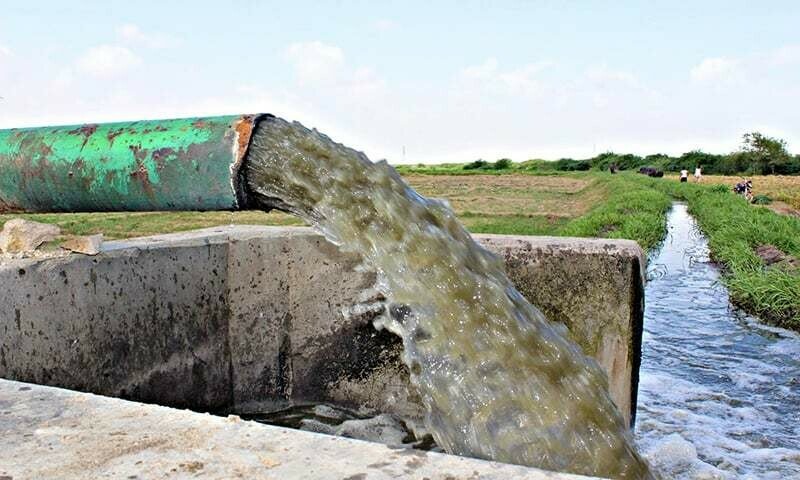Pakistan’s agriculture sector, which consumes over 90 per cent of the country’s available water, is becoming increasingly dependent on groundwater due to multiple factors, including declining river flows, erratic rainfall, expansion of water-intensive rice and sugarcane crops, increased cropping intensity, and more recently, the widespread adoption of solar-powered tubewells that offer minimal operating costs, which encourages indiscriminate pumping of groundwater.
Nowhere is this shift more evident than in Punjab, which accounts for nearly 75pc of the country’s total cropped area. The number of agricultural tubewells in the province has soared from 333,881 in 1994 to over 1.2 million in 2024. District Rahimyar Khan leads with 97,571 tubewells, collectively extracting around 4m acre-feet (MAF) of groundwater annually — a figure largely explained by the district’s extensive sugarcane cultivation.
Collectively, Punjab’s tubewells now withdraw over 51 MAF of groundwater annually — an amount slightly less than Punjab’s entire allocated share of river water under the 1991 Water Apportionment Accord. Yet, due to higher losses in canals and watercourses, farmers receive significantly less water at the farm gate, making overall groundwater the dominant source of irrigation.
Over-reliance on underground water reserves are pushing Punjab’s water tables towards a crisis that may be overcome via check dams and rainwater harvesting
But this over-reliance is pushing Punjab’s underground water reserves to the brink of a crisis. The Punjab Irrigation Department, with over 2,000 operational boreholes across the irrigated area of the province, monitors groundwater levels periodically through piezometres.
The data paints a troubling picture: District Lahore’s water table is falling by an average of 2.61 feet annually — the highest among the Punjab’s districts. Lahore is followed by the districts of Pakpattan and Vehari, where water tables are also declining sharply. As the water table sinks, the energy costs of electric, diesel, or solar pumping increase, while groundwater quality also tends to deteriorate for crop irrigation.
To halt this alarming decline in water tables, Pakistan needs a multi-pronged strategy that aims at reducing water demand through high-efficiency irrigation solutions, minimising conveyance losses in water channels, and ensuring sustainable groundwater management. While the country has implemented various water conservation initiatives in recent years, the critical aspect of groundwater recharge has been largely neglected. It is now imperative to prioritise this issue.
Given Punjab’s water landscape, the two most viable solutions for groundwater recharge are constructing small check dams across rivers and canals and harvesting rainwater to replenish aquifers through recharge ponds and recharge wells.
Check dams require hydrological data, feasibility studies, and substantial financial outlay, and therefore they can only be executed by the government. In contrast, micro rainwater harvesting solutions can be implemented at farm level in rural areas and in residential, commercial, and industrial buildings in urban areas by the respective owners — a practice already common in many water-scarce countries.
District Lahore’s water table is falling by an average of 2.61 feet annually — the highest among the Punjab’s districts followed by Pakpattan and Vehari, where water tables are also declining sharply
Unfortunately, despite receiving significant rainfall, especially during the monsoon, Pakistan wastes an enormous amount of water. In urban areas and agricultural fields, a large volume of rainwater flows into stormwater channels (barsati nalas) and eventually drains into rivers and the sea. The magnitude of this lost resource is evident from recent data.
On August 1, 2024, Lahore airport received a single-day rainfall of 337 millimetres (13 inches). Just days earlier, on July 23, Sialkot recorded a one-day downpour of 114 mm (4.5 inches). Islamabad was drenched with 110 mm (4.3 inches) of rain on Sept 27. Monthly totals are just as striking: Sialkot recorded 468 mm (18.5 inches) in July only, while Lahore witnessed a total of 603 mm (24 inches) in August. Yet, despite these substantial quantities, groundwater reserves continue to deplete. The situation necessitates immediate action.
The real challenge, however, lies in how the government can scale up cost-effective groundwater recharge initiatives. This will require a strategic mix of incentives, capacity-building programmes, and legal reforms to ensure widespread adoption.
For years, the Punjab Government’s Agriculture Department has been running a watercourse lining programme to reduce water conveyance losses. This initiative follows a cost-sharing model with farmers. However, such schemes must be designed to incorporate recharge wells — boreholes along with recharge chambers made from local materials like bricks and gravel — at various low-lying points along the watercourse route. This would enable farmers to divert surplus rain or canal water into the ground, replenishing aquifers, especially during monsoons.
Currently, installing new agricultural tubewells in Punjab does not require any permission. However, if the government were to introduce a licensing system, it could make the construction of a recharge well proportionate to the tubewell’s size and the farm’s area mandatory. It could help balance groundwater extraction and its recharge.
In urban areas, Punjab must initiate a comprehensive groundwater recharge programme under its Annual Development Programme, focusing on the construction of recharge wells in public buildings, including schools, colleges, universities, and hospitals, which typically have extensive covered and open spaces ideal for rainwater collection.
Ideally, we must harvest, store, and use rainwater for non-potable purposes. However, considering cost factors and the prevailing public mindset, this valuable resource should, at the very least, be directed towards groundwater recharge using affordable, locally adapted technologies — an essential step to offset our increasing reliance on groundwater.
Khalid Wattoo is a farmer and a development professional, and Chaudhary Mohammad Ashraff is the former director general of On-Farm Water Management of the Punjab Agriculture Department.
Published in Dawn, The Business and Finance Weekly, May 12th, 2025


